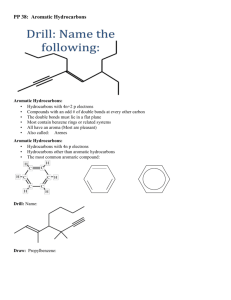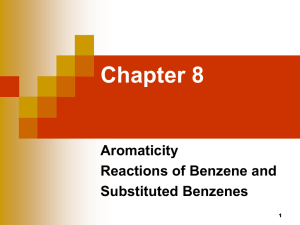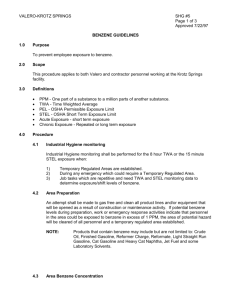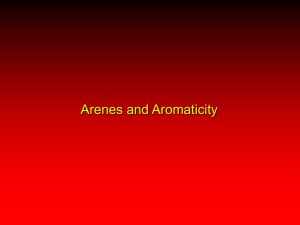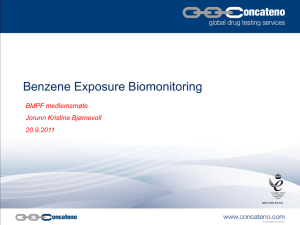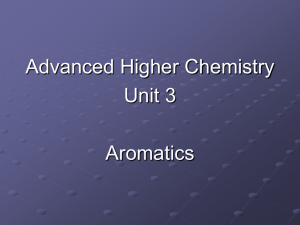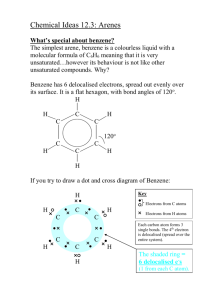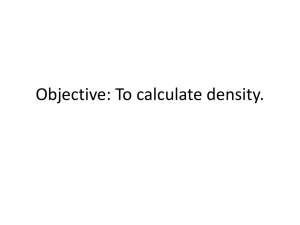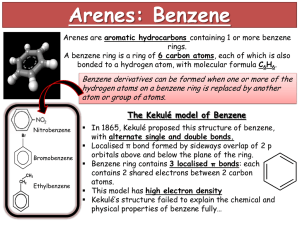Arenes - chemnotes.org.uk
advertisement
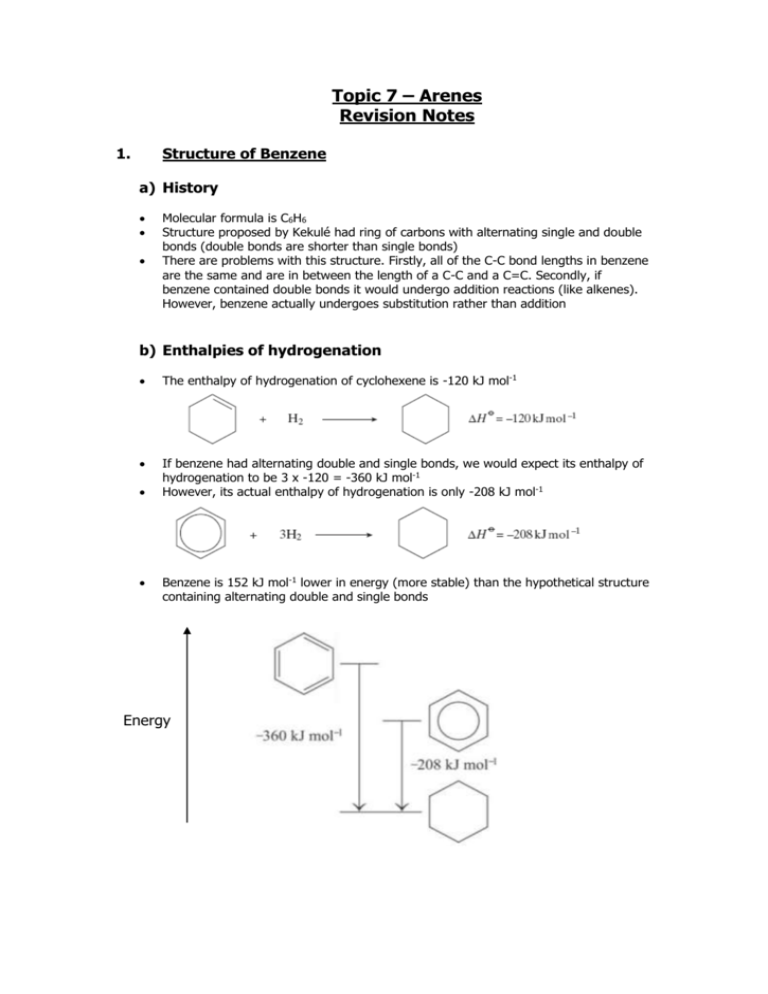
Topic 7 – Arenes Revision Notes 1. Structure of Benzene a) History Molecular formula is C6H6 Structure proposed by Kekulé had ring of carbons with alternating single and double bonds (double bonds are shorter than single bonds) There are problems with this structure. Firstly, all of the C-C bond lengths in benzene are the same and are in between the length of a C-C and a C=C. Secondly, if benzene contained double bonds it would undergo addition reactions (like alkenes). However, benzene actually undergoes substitution rather than addition b) Enthalpies of hydrogenation The enthalpy of hydrogenation of cyclohexene is -120 kJ mol-1 If benzene had alternating double and single bonds, we would expect its enthalpy of hydrogenation to be 3 x -120 = -360 kJ mol-1 However, its actual enthalpy of hydrogenation is only -208 kJ mol-1 Benzene is 152 kJ mol-1 lower in energy (more stable) than the hypothetical structure containing alternating double and single bonds Energy c) Delocalisation of electrons 2. The accepted structure for benzene is a planar (flat) ring of 6 carbon atoms, each of which is also bonded to an H Each carbon has a spare p-orbital. These overlap sideways to form -bonds (which are rings of delocalised electrons, one above the plane and one below the plane). Delocalisation of electrons gives benzene thermodynamic stability. (Stability means lower in energy.) Benzene undergoes substitution reactions rather than addition to maintain delocalisation of electrons Reactions of Arenes a) The high electron density in the -bonds make benzene attractive to electrophiles (electron pair acceptors). The mechanism for the following reactions of benzene is electrophilic substitution Nitration Equation Reagents Conditions Generation of electrophile Product is nitrobenzene Mechanism: b) C6H6 + HNO3 C6H5NO2 + H2O concentrated HNO3 and concentrated H2SO4 (the nitrating mixture) 60C HNO3 + H2SO4 NO2+ + HSO4- + H2O Halogenation Equation Reagents C6H6 + Cl2 C6H5Cl + HCl Cl2 and halogen carrier (Fe, FeCl3 or AlCl3) Generation of electrophile Cl2 + AlCl3 Cl+ + AlCl4Product is chlorobenzene, halogen carrier acts as a catalyst NOTE – It works in exactly the same way for Br 2 with FeBr3 or AlBr3 c) Mechanism: Comparison with alkenes 3. An alkene has a double bond, which means it reacts readily with electrophiles. Benzene is less reactive with electrophiles because its delocalised electrons make it more stable. The delocalised electrons are not easily disrupted so the activation energy for benzene is higher than for an alkene. Benzene is, therefore, more resistant to bromination than an alkene such as cyclohexene and benzene needs a catalyst to polarise the halogen. Properties of Phenol Phenol is more reactive than benzene Phenol is weak acid (proton donor). However, it is a stronger acid than ethanol C6H5OH C6H5O- + H+ The phenol functional group has antiseptic properties 4. Reactions of Phenol a) Bromination Phenol reacts with bromine to form 2,4,6-tribromophenol and HBr. C6H5OH + 3Br2 C6H2Br3OH + 3HBr Goes from orange to colourless and white precipitate formed Bromination of phenol is easier than bromination of benzene: The OH activates the benzene ring The electron-pair from an oxygen p-orbital is donated to the benzene ring There is more electron density on the ring This attracts electrophiles more Compared with benzene, phenol does not need a catalyst to react with bromine Phenol also tri-substitutes whereas benzene mono-substitutes b) With sodium Phenol reacts with sodium to form sodium phenoxide and hydrogen (effervescence seen) C6H5OH + Na C6H5O-Na+ + ½H2 c) With aqueous alkalis Phenol reacts with sodium hydroxide to form sodium phenoxide and water .this is a neutralisation reaction C6H5OH + NaOH C6H5O-Na+ + H2O d) Uses of phenols Phenols are used in the production of antiseptics (like TCP, trichlorophenol), disinfectants, plastics and resins for paints 5. Naming Arenes On a ring, the first substituent determines which carbon is numbered 1. Methylbenzene 1,2-dimethylbenzene 3-chloromethylbenzene
